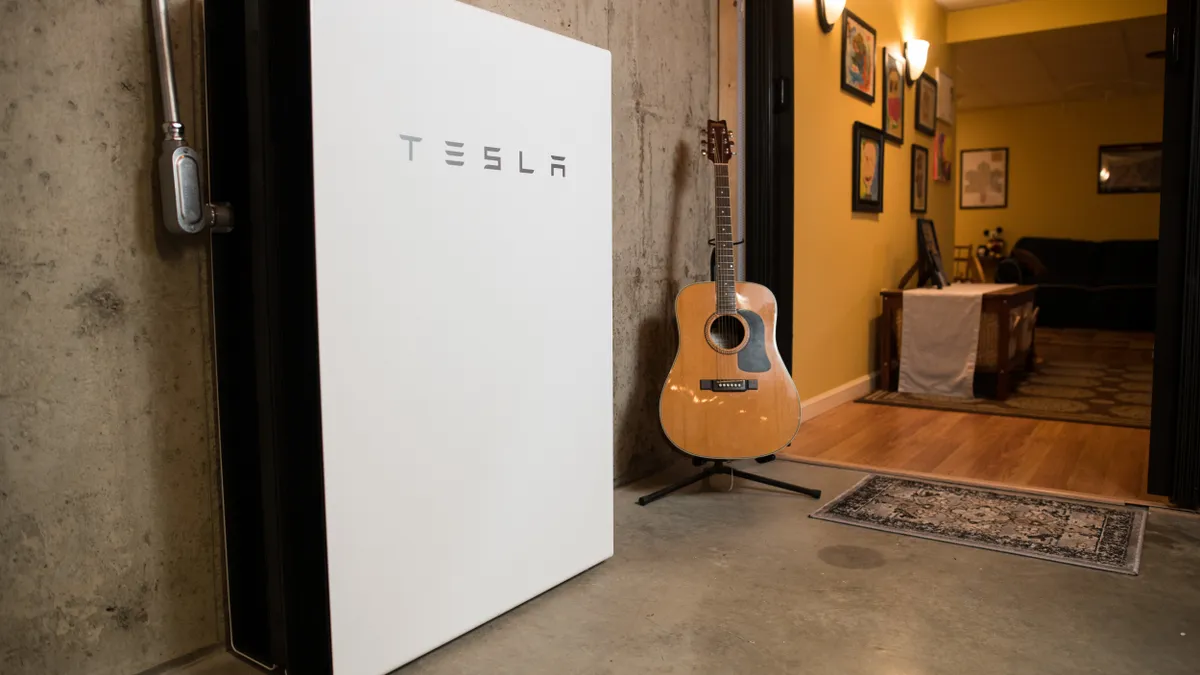Dive Brief:
- Residential energy storage rose 10% in the first quarter of 2020, compared to the prior quarter, setting a new record for deployments while non-residential deployment dropped 20%, according to the latest U.S. Energy Storage Monitor report by the U.S. Energy Storage Association and Wood Mackenzie.
- COVID-19 had minimal first-quarter impacts. However, industry analysts say residential growth declined as much as 40% from March to April.
- Growth of residential storage is expected to recover by the end of this year, while growth of utility-scale deployments remains strong.
Dive Insight:
The U.S. energy storage industry was on track for a record-breaking year in 2020 before the arrival of COVID-19. While still on track to surpass the $1 billion threshold this year, the overall market value of U.S. energy storage this year likely won't achieve the heights expected before the pandemic.
At the beginning of 2020, the market value was expected to top $2 billion before the end of the year, according to a statement by Kelly Speakes-Backman, CEO of the U.S. Energy Storage Association. But after COVID-19 swamped the industry with delays and cancellations, expectations have dropped to $1.6 billion, Speakes-Backman said.
April 2020 saw 40% fewer residential storage applications than March 2020, according to the U.S. Energy Storage Monitor. But utility-scale storage projects, including a handful of new mid-stage projects targeting the fourth quarter of 2020 for commissioning, are expected to make up for the steep decline in growth on the residential side this year, according to Dan Finn-Foley, head of energy storage at Wood Mackenzie.
“While COVID has thrown sand in the gears of the residential, commercial and industrial segments due to social distancing requirements and associated complications with customer acquisitions, effects on utility procurements have been relatively minor,” he told Utility Dive in an email. The handful of utility projects that have not moved forward, he said, seemed as though they were “on that path” before the pandemic, he added.
Growth of major utility projects will allow the total U.S. energy storage market to double its $712 million 2019 value in 2020, despite the pandemic for the time being, Finn-Foley said, and residential and commercial deployments are expected to return to previous rates of growth by the end of the year.
Finn-Foley acknowledged that “the watchword for the industry is still uncertainty,” but Speakes-Backman said the fundamental factors that enabled the record-setting growth in the first quarter of this year remain in place.
According to the U.S. Energy Storage Monitor report, overall first-quarter growth remains centered in California though Massachusetts and New York are up-and-coming markets thanks to large community solar-plus-storage projects driven by incentive programs in those states. Vertical integration among utilities and developers seeking to take advantage of wholesale energy prices and incentives remain primary factors in the growth of energy storage, according to the report.
“Climate-forward policies at the state and federal level are driving investments and are key to advancing energy storage adoption,” Speakes-Backman said “Ultimately, even with these short-term challenges, our long-term perspective and outlook for storage through 2025 remains unchanged.”













